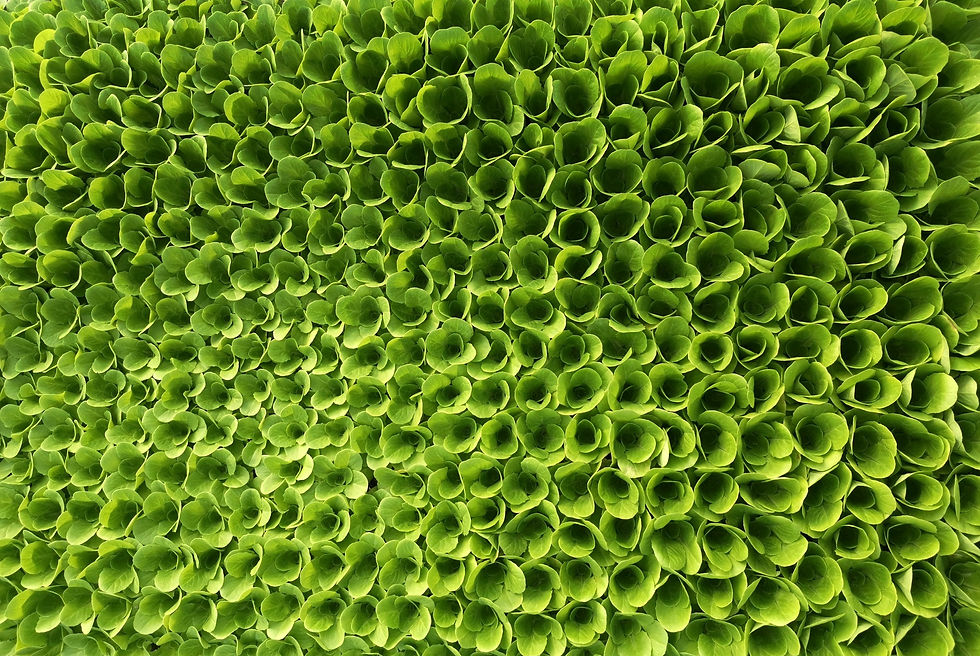How to keep the quality of the water for better results
- נדב פיש

- Jun 7, 2021
- 3 min read
The Hydroponic growing method is based on feeding the plant with nutrients (fertilizer) and water regularly and without the need to use a growing medium such as soil. By doing so, we allow the plant to enjoy regularly from available energy sources that help the plant grow in a particularly healthy and fast way.
It is now clear that water quality is one of the important factors in hydroponic edible gardens. Therefore, once a week (at least) or whenever we fill the water in the reservoir, we want to make sure that the conductivity level (amount of fertilizer) in the system water is desirable (varies according to the types of plants in the system) and that the acidity level (pH) is between 5 and 6.5.

Why is it important?
The answer, depends on the type of the plants in the system. Short-cycle crops such as lettuce, herbs and leafy greens, are more indifferent to abnormalities in the acidity ranges of water (even in cases where the pH reaches 7-7.5) and therefore they are easier to grow.
If we are attempt to grow "fruity" plants such as zucchini, cucumber, tomato, cabbage, and broccoli, it is necessary to be more precise in the water quality and to make sure that we are in the appropriate ranges for these crops. These plants are characterized by a relatively high consumption of fertilizer (EC = 2,400-2,600) and an acidity level ranging from 5 to 6.5, the reason is, that in order to bear fruit and become "yielding" shrubs, these plants requires a lot food to grow. When the acidity of the water moves between the ranges indicated above - the ideal range is obtained for the consumption of the various elements that the plant needs.
The water balancing will be done every time that we fill the reservoir or once a week or two if you did not need to fill the reservoir water and/or you got a float valve that fills the reservoir automatically with a water tap connected to it.
The balancing process will be performed using three simple steps:
We will add water and measure the amount of liters that we added to the water reservoir.
We will add fertilizer according to the amount of water we added and according to the manufacturer's instructions on the back of the fertilizer bottle. A digital conductivity meter can be used to achieve more accurate results or if the water reservoir fills up automatically.
We will sample the acidity of the water in the system using the test tube in the measuring kit, drip a drop from the liquid in the test bottle into the test tube water, close the lid and shake the test tube. We will compare the color of the test tube to the color scale on the back of the test bottle and accordingly we will lower the pH according to the manufacturer's instructions. It is recommended to add relatively little, check gradually and after mixing until the desired result is obtained.
It is important to perform the actions in the right order! Why? The fertilizer itself is slightly acidic, so if we first measure the acidity and then add fertilizer, the reservoir water will be more acidic than the measurement results.
Replacing all the reservoir water every one or two months
Naturally, different plants consume different amounts of nutrients (the elements found in fertilizer). Therefore, after a certain period of the water filling process and adding fertilizer, and depending on the size of the water reservoir, sediments of nutrients not consumed by the plants may accumulate to a level that will affect the results of measuring the fertilizer amount with the electrical conductivity meter (EC) and show us false results. That there is enough fertilizer while it is all those nutrients that the plants did not consume and may even harm them.
The water will be replaced by stopping the pump for safety reasons and to allow all the water in the system to drain back into the reservoir. We will empty the water reservoir and clean the bottom and sides of the reservoir from green layers and other dirt that has accumulated during the growth period. After the cleaning, the reservoir can be refilled and you can preform water balancing.
In summer, it is recommended to add a water disinfectant to the reservoir water twice a week. this liquid kills the bacteria and fungi that tend to develop in the water and around the roots when the water temperature rises. Also, in order to maintain a stable water temperature, note that the water does not exceed the 30 degree threshold, if it has passed - you can put a frozen water bottle in the reservoir or cover it to create shade and maintain a stable water temperature.



Comments